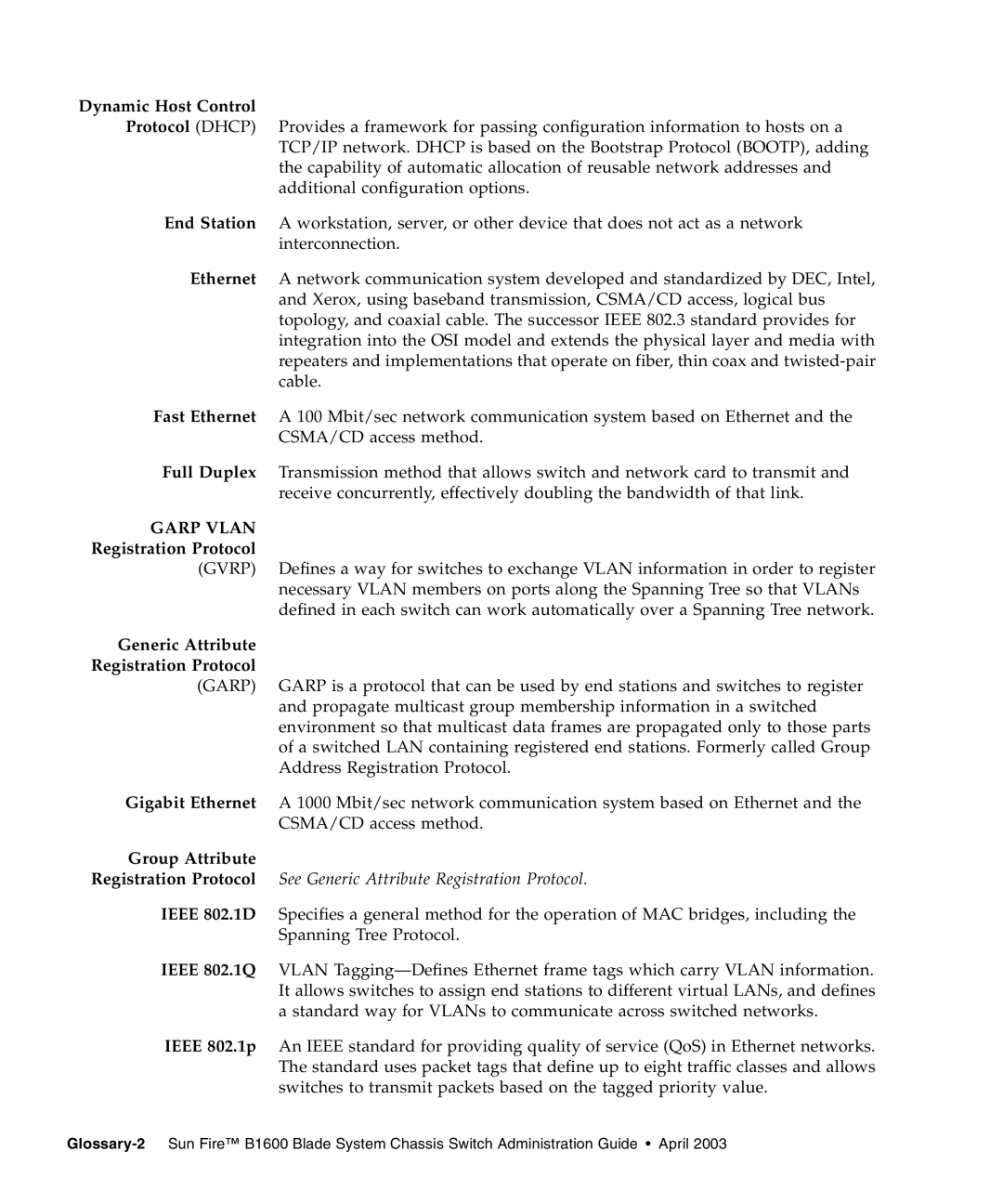Dynamic Host Control
Protocol (DHCP) Provides a framework for passing configuration information to hosts on a TCP/IP network. DHCP is based on the Bootstrap Protocol (BOOTP), adding the capability of automatic allocation of reusable network addresses and additional configuration options.
End Station A workstation, server, or other device that does not act as a network interconnection.
Ethernet A network communication system developed and standardized by DEC, Intel, and Xerox, using baseband transmission, CSMA/CD access, logical bus topology, and coaxial cable. The successor IEEE 802.3 standard provides for integration into the OSI model and extends the physical layer and media with repeaters and implementations that operate on fiber, thin coax and
Fast Ethernet A 100 Mbit/sec network communication system based on Ethernet and the CSMA/CD access method.
Full Duplex Transmission method that allows switch and network card to transmit and receive concurrently, effectively doubling the bandwidth of that link.
GARP VLAN
Registration Protocol
(GVRP) Defines a way for switches to exchange VLAN information in order to register necessary VLAN members on ports along the Spanning Tree so that VLANs defined in each switch can work automatically over a Spanning Tree network.
Generic Attribute
Registration Protocol
(GARP) GARP is a protocol that can be used by end stations and switches to register and propagate multicast group membership information in a switched environment so that multicast data frames are propagated only to those parts of a switched LAN containing registered end stations. Formerly called Group Address Registration Protocol.
Gigabit Ethernet A 1000 Mbit/sec network communication system based on Ethernet and the CSMA/CD access method.
Group Attribute
Registration Protocol See Generic Attribute Registration Protocol.
IEEE 802.1D Specifies a general method for the operation of MAC bridges, including the Spanning Tree Protocol.
IEEE 802.1Q VLAN
IEEE 802.1p An IEEE standard for providing quality of service (QoS) in Ethernet networks. The standard uses packet tags that define up to eight traffic classes and allows switches to transmit packets based on the tagged priority value.
